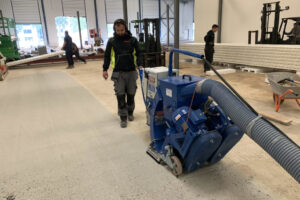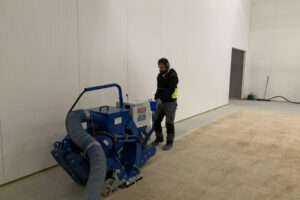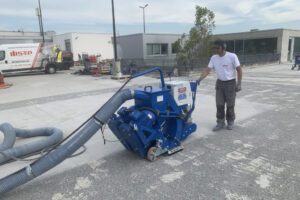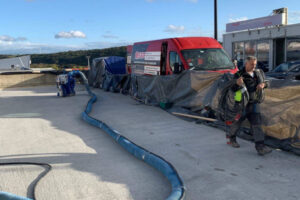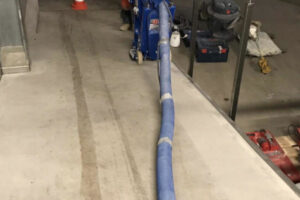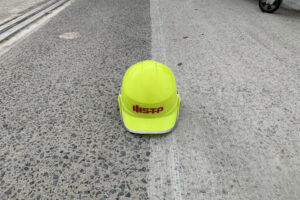Shot blasting of concrete
S-T-P provides its customers with treatment services, among which shot-blasting of concrete ensures the most apparent advantages. Below we will explain why it is considered to be one of the most effective methods.
What it entails?
To put it simply, shot blasting of concrete is the treatment of floors and other level surfaces which relies on the work of a professional machine that ejects pressurised abrasive medium towards the floor: this medium may be composed of sand, glass or metal. The force of those small elements breaks away particles of old layers that are not fixed firmly to the surface, which leads to the cleaning of the surface and improvement to its roughness.
Application
Shot blasting of concrete is used mainly to provide the basis for additional surface protection layers, such as the application of paint or laying of tiles. Floor shot blasting is most often, but not exclusively, ordered by industrial plants and parking lot owners. Shot blasting of floors is often used not only to achieve the optimal level of roughness, but also to detect potential cracks. This way it is possible to perform repairs before subsequent stages of work.
Why choose shot blasting
Concrete treatment using this method is very economical and efficient — through the use of specialist machinery we may achieve clean, rough surface without hidden faults in a short amount of time. Whether we use shot blasting to prepare the floor for tile laying or treat the surface to get rid of old layers of varnish and markings, we always work without dust emission — therefore this method is not only safe for the people in the vicinity, but is also environment friendly.
Advantages
The surface treatment service provided by our company brings the following advantages:
- removes cement wash, rust, thin paint coatings, horizontal markings (halls, warehouses, parking lots, streets, bridges, steel tanks, airports, etc.);
- increases roughness and provides an appropriate profile for floors, surfaces that are smooth and hazardous due to risk of slipping (e.g. tiles, terracotta, concrete, steel, asphalt, etc.);
- increases adhesiveness before the application of subsequent layers;
- creates surfaces which will provide more efficient water drainage;
- helps in detecting previously hidden faults (e.g. cracks, blisters) which create a risk of delamination for the newly created floor during its exploitation;
- achieves accurately cleaned surfaces, which simultaneously increases their appearance and improves mechanical strength.




